Information injection-pump assembly
ZEXEL
101603-1720
1016031720
MITSUBISHI
ME056367
me056367

Rating:
Cross reference number
ZEXEL
101603-1720
1016031720
MITSUBISHI
ME056367
me056367
Zexel num
Bosch num
Firm num
Name
Calibration Data:
Adjustment conditions
Test oil
1404 Test oil ISO4113 or {SAEJ967d}
1404 Test oil ISO4113 or {SAEJ967d}
Test oil temperature
degC
40
40
45
Nozzle and nozzle holder
105780-8140
Bosch type code
EF8511/9A
Nozzle
105780-0000
Bosch type code
DN12SD12T
Nozzle holder
105780-2080
Bosch type code
EF8511/9
Opening pressure
MPa
17.2
Opening pressure
kgf/cm2
175
Injection pipe
Outer diameter - inner diameter - length (mm) mm 6-2-600
Outer diameter - inner diameter - length (mm) mm 6-2-600
Overflow valve opening pressure
kPa
255
221
289
Overflow valve opening pressure
kgf/cm2
2.6
2.25
2.95
Tester oil delivery pressure
kPa
157
157
157
Tester oil delivery pressure
kgf/cm2
1.6
1.6
1.6
Direction of rotation (viewed from drive side)
Right R
Right R
Injection timing adjustment
Direction of rotation (viewed from drive side)
Right R
Right R
Injection order
1-5-3-6-
2-4
Pre-stroke
mm
4.5
4.45
4.55
Beginning of injection position
Governor side NO.1
Governor side NO.1
Difference between angles 1
Cal 1-5 deg. 60 59.5 60.5
Cal 1-5 deg. 60 59.5 60.5
Difference between angles 2
Cal 1-3 deg. 120 119.5 120.5
Cal 1-3 deg. 120 119.5 120.5
Difference between angles 3
Cal 1-6 deg. 180 179.5 180.5
Cal 1-6 deg. 180 179.5 180.5
Difference between angles 4
Cyl.1-2 deg. 240 239.5 240.5
Cyl.1-2 deg. 240 239.5 240.5
Difference between angles 5
Cal 1-4 deg. 300 299.5 300.5
Cal 1-4 deg. 300 299.5 300.5
Injection quantity adjustment
Adjusting point
-
Rack position
9.6
Pump speed
r/min
700
700
700
Each cylinder's injection qty
mm3/st.
112
108.6
115.4
Basic
*
Fixing the rack
*
Standard for adjustment of the maximum variation between cylinders
*
Injection quantity adjustment_02
Adjusting point
C
Rack position
8+-0.5
Pump speed
r/min
225
225
225
Each cylinder's injection qty
mm3/st.
18.5
15.7
21.3
Fixing the rack
*
Standard for adjustment of the maximum variation between cylinders
*
Injection quantity adjustment_03
Adjusting point
A
Rack position
R1(9.6)
Pump speed
r/min
700
700
700
Average injection quantity
mm3/st.
112
111
113
Fixing the lever
*
Injection quantity adjustment_04
Adjusting point
B
Rack position
R1(9.6)
Pump speed
r/min
1100
1100
1100
Average injection quantity
mm3/st.
113.5
111
116
Difference in delivery
mm3/st.
9
9
9
Fixing the lever
*
Injection quantity adjustment_05
Adjusting point
E
Rack position
-
Pump speed
r/min
100
100
100
Average injection quantity
mm3/st.
140
120
160
Fixing the lever
*
Remarks
After startup boost setting
After startup boost setting
Timer adjustment
Pump speed
r/min
850--
Advance angle
deg.
0
0
0
Remarks
Start
Start
Timer adjustment_02
Pump speed
r/min
800
Advance angle
deg.
0.5
Timer adjustment_03
Pump speed
r/min
900
Advance angle
deg.
0.9
0.4
1.4
Timer adjustment_04
Pump speed
r/min
1150
Advance angle
deg.
3
2.5
3.5
Timer adjustment_05
Pump speed
r/min
-
Advance angle
deg.
4
4
5
Remarks
Measure the actual speed, stop
Measure the actual speed, stop
Test data Ex:
Governor adjustment
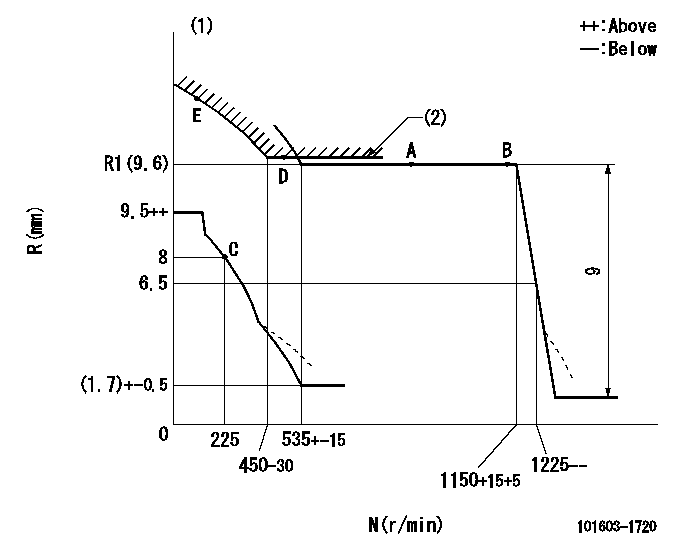
N:Pump speed
R:Rack position (mm)
(1)Beginning of damper spring operation: DL
(2)Excess fuel setting for starting: SXL
----------
DL=6-0.2mm SXL=R1(9.6)+0.2mm
----------
----------
DL=6-0.2mm SXL=R1(9.6)+0.2mm
----------
Speed control lever angle
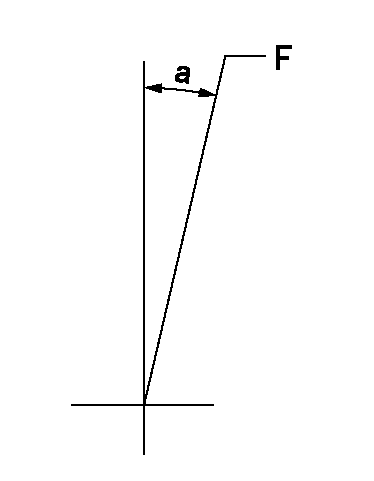
F:Full speed
----------
----------
a=10deg+-5deg
----------
----------
a=10deg+-5deg
0000000901
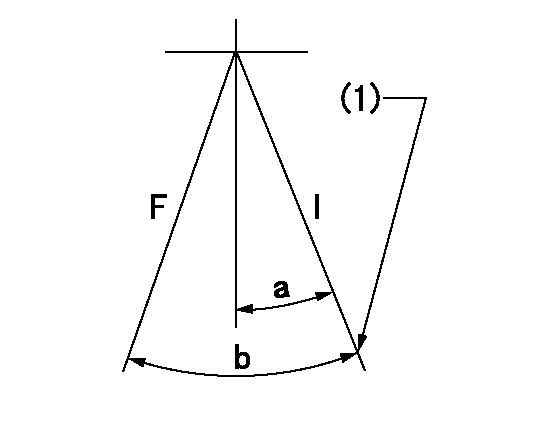
F:Full load
I:Idle
(1)Stopper bolt setting
----------
----------
a=21.5deg+-5deg b=(29deg)+-3deg
----------
----------
a=21.5deg+-5deg b=(29deg)+-3deg
Stop lever angle
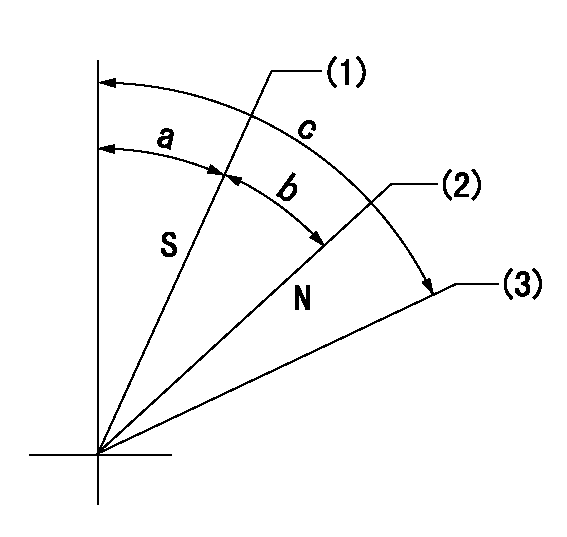
N:Pump normal
S:Stop the pump.
(1)Rack position = aa, stopper bolt setting
(2)Rack position bb
(3)Free (at delivery)
----------
aa=5.5-0.5mm bb=16mm
----------
a=12.5deg+5deg-7deg b=34deg+-5deg c=(72deg)
----------
aa=5.5-0.5mm bb=16mm
----------
a=12.5deg+5deg-7deg b=34deg+-5deg c=(72deg)
0000001501 MICRO SWITCH
Adjustment of the micro-switch
Adjust the bolt to obtain the following lever position when the micro-switch is ON.
(1)Speed N1
(2)Rack position Ra
----------
N1=325+-5r/min Ra=7.3mm
----------
----------
N1=325+-5r/min Ra=7.3mm
----------
Timing setting
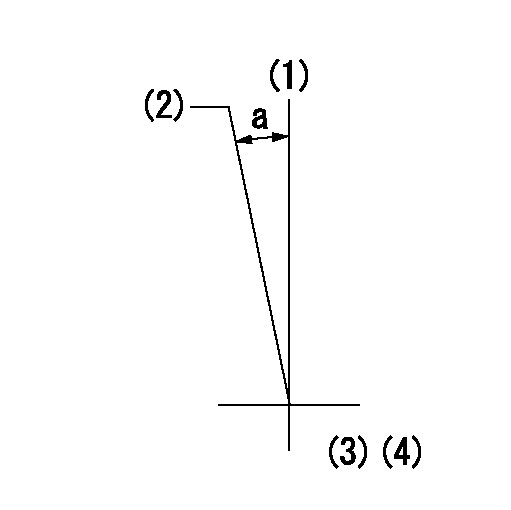
(1)Pump vertical direction
(2)Coupling's key groove position at No 1 cylinder's beginning of injection
(3)-
(4)-
----------
----------
a=(7deg)
----------
----------
a=(7deg)
Information:
Industrial Rating Definitions
The application examples are listed for reference only. Refer to the specific application information and guidelines within the Technical Marketing Information for exact rating determination.A Rating (Continuous)
* For heavy-duty service when engine is operated at rated load and speed up to 100 percent of the time without interruption or load cycling.* Time at full load up to 100 percent of the duty cycle.* Typical examples are: pipeline pumping, ventilation, and customer specifications.B Rating
* For servicing where power and/or speed are cyclic.* Time at full load not to exceed 80 percent of the duty cycle.* Typical examples are: irrigation where normal pump demand is 85 percent of the duty cycle, oil field mechanical pumping and drilling, and stationary/plant air compressors.C Rating (Intermittent)
* For service where power and/or speed are cyclic* The horsepower and speed capability of the engine can be used for one uninterrupted hour, followed by one hour of operation at or below the A rating.* Time at full load not to exceed 50 percent of the duty cycle.* Typical examples are: agricultural tractors, harvesters and combines, off-highway trucks, fire pump application power, blast hole drills, rock crushers and wood chippers with high torque rise, and oil field hoisting.D Rating
* For service when rated power is required for periodic overloads.* The maximum horsepower and speed capability of the engine can be used for a maximum of 30 uninterrupted minutes, followed by one hour of followed by one hour of C rating operation.* Time at full load not to exceed 10 percent of the duty cycle.* Typical examples are: offshore cranes, runway snow blowers, water well drills, portable air compressors, and fire pump certification power.E Rating
* For service where rated power is required for a short time for initial starting or sudden overload. For emergency service where standard power is unavailable.* The maximum horsepower and speed capability of the engine can be utilized for a maximum of 15 uninterrupted minutes, followed by one hour at C rating operation, or for the duration of the emergency.* Time at full load is not to exceed 5 percent of the duty cycle.* Typical examples are: standby centrifugal water pumps, oil field well servicing, crash trucks, and gas turbine starters.Rating Conditions
Unless otherwise specified, all ratings are based on SAE J1349 standard ambient conditions:* 100 kPa (29.6 inches of Hg) of pressure* 30 percent relative humidity, and* a temperature of 26°C (77°F).Ratings also apply at AS1501, BS5514, DIN6271, and ISO3046/1 standard conditions.Power for diesel engines is based on:* API gravity of 35 at 15°C (60°F),* fuel LHV of 42.780 kJ/g (18390 Btu/lb) at 29°C (84°F), and* fuel density of 838.9 g/L (7.0001 lb/US gal)Ratings are gross output ratings- the total output capability of the engine-equipped with standard accessories. Standard accessories include pumps for lubrication oil, fuel, and jacket water, and magneto as required. The gross output, minus the power required to drive auxiliary components, equals the net power available for the external (flywheel) load. Typical auxiliary components include cooling fans, air compressors,
The application examples are listed for reference only. Refer to the specific application information and guidelines within the Technical Marketing Information for exact rating determination.A Rating (Continuous)
* For heavy-duty service when engine is operated at rated load and speed up to 100 percent of the time without interruption or load cycling.* Time at full load up to 100 percent of the duty cycle.* Typical examples are: pipeline pumping, ventilation, and customer specifications.B Rating
* For servicing where power and/or speed are cyclic.* Time at full load not to exceed 80 percent of the duty cycle.* Typical examples are: irrigation where normal pump demand is 85 percent of the duty cycle, oil field mechanical pumping and drilling, and stationary/plant air compressors.C Rating (Intermittent)
* For service where power and/or speed are cyclic* The horsepower and speed capability of the engine can be used for one uninterrupted hour, followed by one hour of operation at or below the A rating.* Time at full load not to exceed 50 percent of the duty cycle.* Typical examples are: agricultural tractors, harvesters and combines, off-highway trucks, fire pump application power, blast hole drills, rock crushers and wood chippers with high torque rise, and oil field hoisting.D Rating
* For service when rated power is required for periodic overloads.* The maximum horsepower and speed capability of the engine can be used for a maximum of 30 uninterrupted minutes, followed by one hour of followed by one hour of C rating operation.* Time at full load not to exceed 10 percent of the duty cycle.* Typical examples are: offshore cranes, runway snow blowers, water well drills, portable air compressors, and fire pump certification power.E Rating
* For service where rated power is required for a short time for initial starting or sudden overload. For emergency service where standard power is unavailable.* The maximum horsepower and speed capability of the engine can be utilized for a maximum of 15 uninterrupted minutes, followed by one hour at C rating operation, or for the duration of the emergency.* Time at full load is not to exceed 5 percent of the duty cycle.* Typical examples are: standby centrifugal water pumps, oil field well servicing, crash trucks, and gas turbine starters.Rating Conditions
Unless otherwise specified, all ratings are based on SAE J1349 standard ambient conditions:* 100 kPa (29.6 inches of Hg) of pressure* 30 percent relative humidity, and* a temperature of 26°C (77°F).Ratings also apply at AS1501, BS5514, DIN6271, and ISO3046/1 standard conditions.Power for diesel engines is based on:* API gravity of 35 at 15°C (60°F),* fuel LHV of 42.780 kJ/g (18390 Btu/lb) at 29°C (84°F), and* fuel density of 838.9 g/L (7.0001 lb/US gal)Ratings are gross output ratings- the total output capability of the engine-equipped with standard accessories. Standard accessories include pumps for lubrication oil, fuel, and jacket water, and magneto as required. The gross output, minus the power required to drive auxiliary components, equals the net power available for the external (flywheel) load. Typical auxiliary components include cooling fans, air compressors,